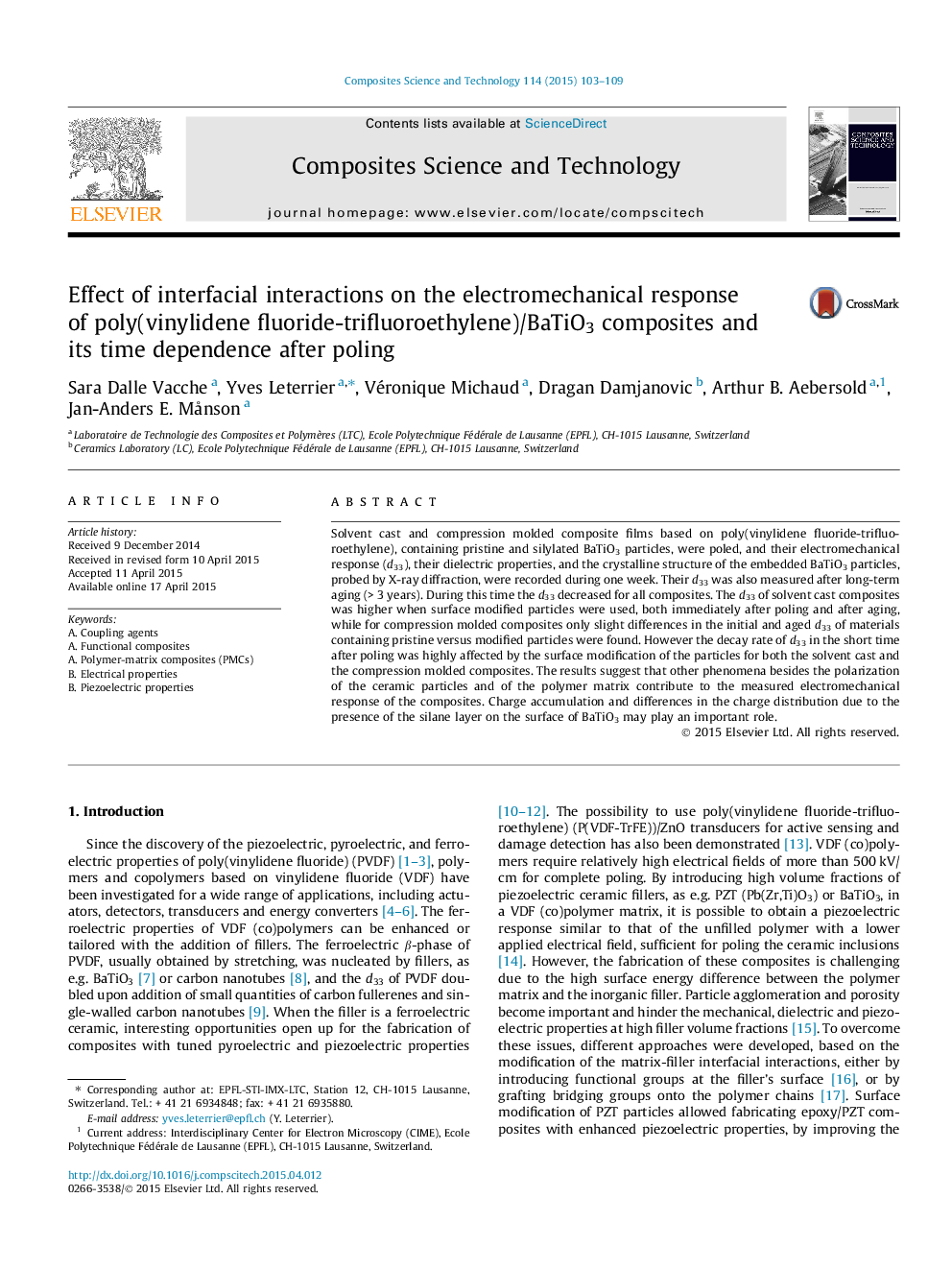| Article ID | Journal | Published Year | Pages | File Type |
|---|---|---|---|---|
| 820129 | Composites Science and Technology | 2015 | 7 Pages |
Solvent cast and compression molded composite films based on poly(vinylidene fluoride-trifluoroethylene), containing pristine and silylated BaTiO3 particles, were poled, and their electromechanical response (d33), their dielectric properties, and the crystalline structure of the embedded BaTiO3 particles, probed by X-ray diffraction, were recorded during one week. Their d33 was also measured after long-term aging (> 3 years). During this time the d33 decreased for all composites. The d33 of solvent cast composites was higher when surface modified particles were used, both immediately after poling and after aging, while for compression molded composites only slight differences in the initial and aged d33 of materials containing pristine versus modified particles were found. However the decay rate of d33 in the short time after poling was highly affected by the surface modification of the particles for both the solvent cast and the compression molded composites. The results suggest that other phenomena besides the polarization of the ceramic particles and of the polymer matrix contribute to the measured electromechanical response of the composites. Charge accumulation and differences in the charge distribution due to the presence of the silane layer on the surface of BaTiO3 may play an important role.
